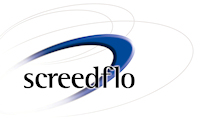Screedflo Rapide Floor Screed
This anhydrite screed has been tested at a 50mm depth and found to be dry to 75RH within 14 days. Please see the attached drying information and data sheet.
At 40mm a standard Screedflo screed in good drying conditions has been found to be dry in 28 days, but as most site conditions are not 20 degrees and 60RH, we say 40 days - 1mm per day.
Gypsol Rapide at 50mm, in comparison was found to be dry in half the time – 14 days, so in normal site conditions the drying time is likely to be half that of standard liquid screed.
Rapide is ideally suited to jobs that have no UFH. The benefit of Rapide is that it will significantly reduce the drying time of the screed, at most depths.
Rapide can also be laid with UFH, it will dry faster, but the UFH still needs to be commissioned.
If a 75mm standard screed is laid, and the UFH is used to force dry the screed, it is likely that two commissioning cycles will be needed, or the first commissioning cycle will need to be held for much longer at the high temperature to remove the moisture, which is expensive and can make the site uncomfortable to work in.
With Rapide, the 21 day cycle should be sufficient to thermally move the floor which is required before floor coverings are laid, and the 75mm screed should be dry.
Applications
Rapide can be laid at these minimum depths:
- 40mm with UFH
- 40mm on insulation
- 30mm on a membrane and slab
- 40mm on a timber floor
- 45mm on a timber floor with UFH
Screedflo Rapide virtually eliminates loose friable laitance, so no early sanding is required.
Once moisture testing is complete in line with BS8204:7:2003 and the screed is confirmed dry, the surface should be treated in line with the Contract Flooring Association requirements, the relevant British Standards and the advice of the adhesive manufacturers. Preparations remain the responsibility of the floor covering contractor and include lightly abrading the surface. This helps promote primer penetration, provides a key for adhesives and removes extraneous debris e.g. mortar, plaster and mud, and removes any loose friable laitance. It is generally unnecessary to remove the top surface of the screed to expose an aggregated finish.

